Abstract
Asia’s large and growing population will increase the demand for food over the next few decades – an estimated CAGR of 27.4% between 2020 and 2025. To meet this demand, agricultural lands across the region will need to improve their crop yield beyond their current levels.
Unsustainable agricultural practices are worsening the yield and safety challenges of agriculture. Plastic waste and greenhouse gas emissions in agriculture have rapidly increased in the past three decades. This has stagnated the growth of crop yields over time.
OneCrop, an Australian farm-tech company, replaces plastic mulches, coverings placed on soil areas where crops are planted which are a significant source of plastic pollution in the soil, with an environmentally friendly biodegradable mulch film technology that also increases the crop yield by 30%. The solution is delivering significant economical and environmental advantages to large-scale farms across Australia, China, and the United States, and helps to shift towards sustainable agriculture, including water and resource efficiency, and offering healthier crops with less contaminants.
Main Highlights
Agriculture challenges in Asia and Asia-Pacific
- Asia lags in overall agricultural efficiency when compared to some other regions.
- Estimates show that potential cereal yield could reduce by up to 25% in 2050 as compared to yield in 2000 if the effects of climate change continue at its current pace.
- Mulches are coverings placed on the surface of soil used for agriculture used to improve growing conditions and yield, with plastic mulches (that contain polyethylene) being rapidly adopted since the 1980s.
19% of Chinese agricultural lands have contaminated soil with plastic constituting a significant portion of this percentage.
Almost 250 kilograms of plastic residue can be found per hectare in some parts of China, mainly due to plastic mulches – a type of contamination called “white pollution”.
Biodegradable mulch films – a viable, sustainable alternative
OneCrop is a company that makes award-winning, hi-tech mulch films that deliver all the benefits of improving crop yield using biodegradable mulches without major trade-offs in price or performance.
By using the biodegradable mulch, a 5000-hectare Australian farm would unlock close to $5m in economic gains through water savings and improved crop yield, while avoiding plastic contamination in the soil.
OneCrop’s Impact
Leads to safeguarding of long-term soil health, safer food for humans, safer environment for animals, and reducing the “white pollution” problem of agriculture.
The microclimate created using mulch films lead to 10-15% more germination and a 30% increase in crop yield, while improving plant health.
The annual impact of the mulch films in large-scale farming is one-and-a-half megaliters of water savings per hectare.
Systems Perspective on OneCrop
OneCrop’s solution – the biodegradable mulch film – to the “white pollution” problem leads to three significant inter-connected outcomes:
Improves crop yield, health, and safety; leading to better food security.
Makes agriculture more sustainable, slowing climate change.
Increase the profitability of farms, making agriculture more economically viable.
Case Overview
Asia is at the forefront of food and agricultural supply and demand. Globally, Asia accounts for 19% of exports and 31% of imports in food and agriculture. This is a result of population and economic growth in the region, where food and agriculture consumption patterns are changing because of improved economic positions of people in the region.
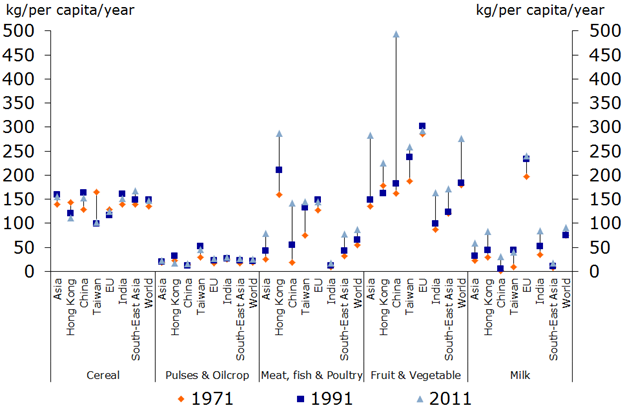
Asian consumers’ food aspiration adapts to an improving economic position. Source: Rabobank
A couple of questions arise. Is Asia able to meet an evolving demand for food through agriculture in the short-term and in the long-term? Can this be achieved in an environmentally sustainable manner? Limited availability of agricultural land, inadequate water resources, unsustainable agricultural practices, and climate change are challenges to increasing food production volumes in Asia. Breakthrough innovations in agriculture are needed to solve these challenges. Before looking at solutions, the challenges need to be better understood.
Agricultural yield in Asia and Asia-Pacific
Over the last 50 years, Asia has almost doubled its agricultural output. During the same period, agricultural land area has grown by just 32%. This indicates a drastic improvement in agricultural yield and evolved agricultural practices. Despite the improvement, Asia lags in overall agricultural efficiency when compared to some other regions of the world.
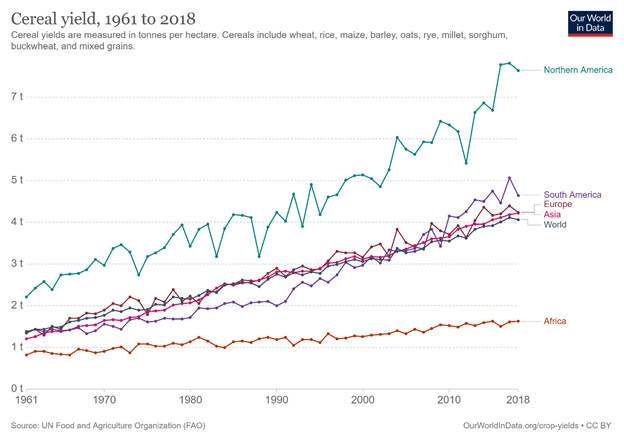
Cereal yield across continents. Source: Our World In Data
Although statistically the Asian agricultural yield is at par with the global average, in the context of a large and growing population with limited availability of land, it is a challenge that needs focus.
Insufficient agricultural yield in Asia is attributed to depleting natural resources (such as water), deteriorating soil quality, and inefficient agricultural practices. Climate change, too, is a big risk factor for agricultural yield. Estimates show that potential cereal yield could drop up to 25% below the year 2000’s baseline by 2050 if climate change continued at its current pace.
Unsustainable agricultural practices are contributing to climate change as well. For instance, Asian agriculture is responsible for around 40% of global agricultural emissions of greenhouse gases – a large part of it is due to the overuse of chemical fertilizers. Practices like mono-cropping are increasing dependencies on 1 or 2 types of crops, which leads to reduction in biodiversity. This in turn worsens the problem of pests and diseases in crops and many farmers resort to over-using chemical fertilizers to combat it.
Another example is inefficient water usage in Indian agriculture. The agricultural sector’s irrigation accounts for 80% India’s water consumption. Yet 65% of cultivable agricultural land do not have adequate irrigation facilities. The International Finance Corporation (IFC) estimates this imbalance along with higher water contamination will cause a 50% water deficit for agriculture in India by the year 2030.
The dependence of plastics in agriculture in Asia
Among many unsustainable practices, plastics have been increasingly adopted in Asian agriculture. This is due to their ease of use in large-scale applications to improve crop yield such as – greenhouses, irrigation tubing, and plastic mulches (polyethylene coverings placed directly on the surface of soil used for agriculture).
While these do offer an increase in immediate, or short-term crop yield, extensive use is leading to plastic wastes from agriculture to grow. This plastic waste is leading to increased contamination in soil which is escalating their presence in food and water systems.
In this regard, the plastic mulches are a key problem to tackle as they are placed directly over large areas of agricultural land where crops are grown,and are very thin, easy to tear and difficult to clean-up, increasing the potential for plastic contamination. This leads to plastic residual film pollution, which is most severe in China where over 2 million tons of plastic mulches are currently in use. The plastic pollution in agriculture is putting both animals and human beings at risk, apart from affecting the long-term health of agricultural lands.
While thicker plastics like those from greenhouses, irrigation tubing can be easily collected and recycled, broken-down plastic mulches (microplastics) pose a significant challenge. The use of mulches cannot be avoided, however, as they are necessary to improve agricultural yield.
OneCrop, is an Australian manufacturer of fully biodegradable mulches (mainly composed of polybutyrate, PBAT ≥ 95%), offers a viable, sustainable alternative to polyethylene-based plastic mulches. The award-winning, hi-tech mulch films by OneCrop are able to deliver all the benefits of using mulches without major trade-offs in price, performance, and plastic contamination to the soil.
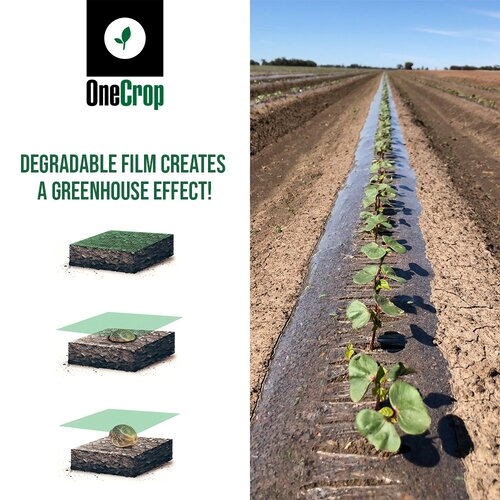
One Crop’s biodegradable mulch. Source: One Crop
The use of QuickStart, OneCrop’s biodegradable mulch films, is particularly beneficial in large-scale crop operations. The advantages beyond avoiding and reducing the use of plastics in agriculture are:
1. Reduced water usage – one-and-a-half megaliters of water savings per hectare, annually.
2. Faster germination – 10-15% higher germination, 5-7 days earlier than crops not under film.
3. Improved plant health – plants consistently show a deeper and more developed root system, as well as greater above ground biomass, more resistant to pests and diseases.
4. Increased agricultural yield – 30% increase in crop yield, on average.
5. Fast biodegradability – 100% biodegradable leaving no harmful residue behind, degrade naturally in about 40-60 days.
6. Easy compatibility – integrates with existing or new machinery, a 6-row machine can plant and film 40 acres in a day.
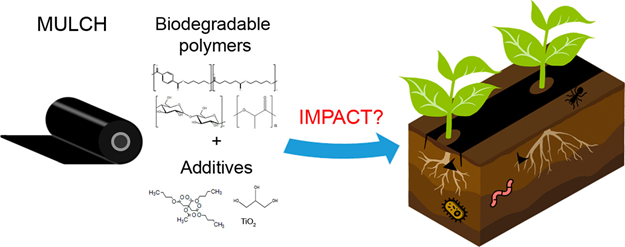
How the OneCrop biodegradable mulch works. Source: ScienceDirect
In depth studies, done as part of field trials for QuickStart, show that biodegradable mulches and plastic mulches show similar levels of advantages in all but one category: long-term soil health. Biodegradable mulches, by not contaminating the soil with any harmful residue (like polyethylene microplastics), are able to provide a sustainable solution to improving agricultural yield.
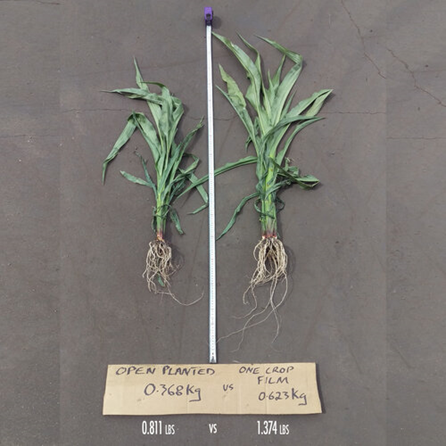
Source: OneCrop
QuickStart is especially applicable for agricultural lands that grow cotton, corn, and hemp. The biodegradable mulch film technology is being actively used in Australia, China, and the United States. Apart from being a sustainable alternative, the mulch film activates significant economic advantages for farmers. For instance, in Australia, a 5000-hectare farm would unlock close to $5m in economic gains through water savings and improved crop yield.
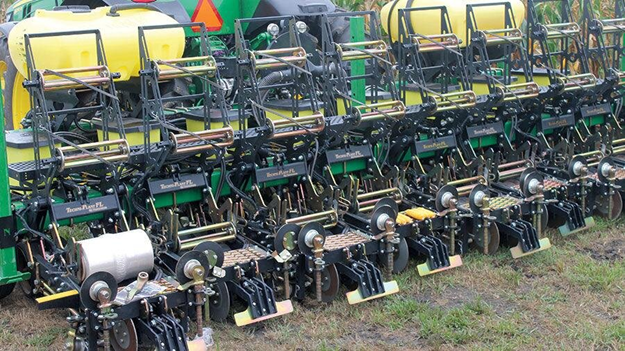
Machines to lay OneCrop’s biodegradable mulches. Source: OneCrop
OneCrop is expanding its expertise in more crops (such as potatoes, cucumbers, soybeans, and sugar beets) and retrofitting with more existing planting machinery – and even enabling better automation (of planting) in agricultural fields. This is leading to significant advancements in tackling “white pollution” by reducing significant challenges in crop yield and sustainability in Asian and Asia-Pacific agriculture.
Impact Statement
OneCrop’s Biodegradable Mulch Film Technology serves as a viable alternative to plastic mulches that have been rapidly adopted in agricultural lands since the 1980s. It is enabling mulches to be a sustainable solution to the Asian crop yield and agricultural sustainability challenges.
Safer food and water ecosystems
An average Asian consumes 20 Kgs of plastic from food and water every year. Microplastics, such as that from plastic mulches actively contribute to this by contaminating soil and water in agricultural lands.
The 100% biodegradability of OneCrop’s mulch provides a significant sustainable advantage over conventional plastic mulches. This leads to safeguarding of soil health, safer food for humans, safer environment for animals, and reducing the “white pollution” problem of agriculture.
Also, the use of the mulches are positively associated with better plant health – making them more resistant to diseases and pests. Dependency on chemical fertilizers is therefore reduced to a large extent, further preserving long-term soil health.
Better agricultural yield
Asia’s rate of improvement in agricultural yield is slower than many other regions. The stagnation is leading to inadequate food security. The microclimate created using biodegradable mulch films lead to 10-15% more germination and a 30% increase in crop yield, while improving plant health.
Environmentally and economically sustainable solution
Use of biodegradable mulch leads to reduced usage of water in agricultural lands. It does so by retaining more moisture around the crops. The annual impact is one-and-a-half megaliters of water savings per hectare.
The sustainable edge of OneCrop’s biodegradable mulch along with the microclimate created by the application of mulches lead to significant economic advantages. In Australia, a 5000-hectare land can experience a net improved result of $5m with the use of OneCrop’s mulch.
Systems Perspective
The improvement of crop yield in Asia and Asia-Pacific over the last few decades is due to the introduction of new solutions and technology that mitigate challenges of growing food. However, not all these solutions are sustainable – environmentally and/or economically. The introduction of plastic mulch films in the 1980s is an example of this flaw.
To understand the extent of the flaw, China serves as a relevant example – being the highest user of plastic mulch films in the past two decades. More than 19% of Chinese agricultural lands have contaminated soil and plastic is a big part of that. In some areas (like Xinjiang), there is 250 kilograms of plastic residue to the hectare. This has contributed to the emergence of “white pollution”. The term is coined as a homage of the “white revolution” – which is a landmark in agricultural progress, while “white pollution” is clearly a step back.
OneCrop’s solution – the biodegradable mulch film – to the “white pollution” problem leads to three significant inter-connected outcomes:
1. Improves crop yield, health, and safety; leading to better food security
2. Makes agriculture more sustainable, slowing climate change
3. Increase the profitability of farms, making agriculture more economically viable
These outcomes are substantial for Asia and Asia-Pacfic regions where crop yield has been reducing, plastic waste has been increasing, and demand for food has been growing. By partnering with conventional plastic mulch suppliers (in China, at the time), OneCrop is setting itself up for delivering high impact in the region’s agricultural sector – across multiple Sustainable Development Goals (SDGs).
OneCrop’s biodegradable mulch film is yet to be market-tested with many major crop types (such as wheat) and its integration with very old planting machineries (commonly found in South Asia) is limited. These are limitations to the rapid scalability of this solution. However, the solution remains as economical and impactful as conventional plastic mulches, without the environmental harm. Therefore, a lower barrier to entry in newer markets is expected for OneCrop’s biodegradable mulch – paving the way for it to become a truly commercial solution for farmers across Asia.
Links and Contact Information
Company Website (now Coverfields)
Article by: Aravind Kannan and Shravan Shankar, 4REVS researchers (and more)

